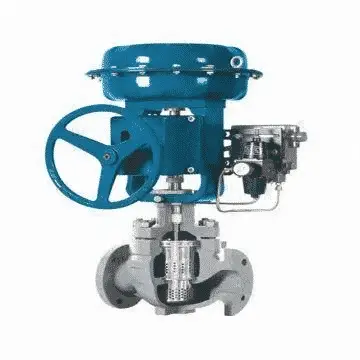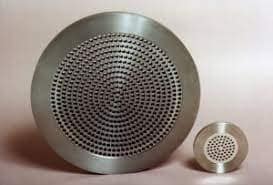There are two basic approaches of controlling valve noise are source treatment and path treatment. The source treatment noise suppresses excessive noise generated within the control valve. The path treatment reduces the noise after noise generation in the valve.
We can not completely eliminate the noise in a valve, but we can reduce it up to a great extent that plant operators can bear. By reducing the noise, we can increase the plant efficiency and life span of the valve by reducing the noise
There are very few methods of elimination of the control valve noise.
How to Reduce Control Valve Noise?
The source and path treatment are the methods for valve noise reduction.
Direct Approach (Source Treatment)
Source treatment is a method of reducing the generation of noise.
Common source treatments include,
- Noise-attenuation control valve trims
- Inline diffusers
- Vent diffusers that minimize turbulence.
Source treatment is killing the source of noise which is generally valve trim and distributing pressure drop in the valve port area by using low noise trims. We use noise reduction trim for reducing the noise production in valves. The reduction of acoustic energy is accomplished by minimizing the effect of the shock wave and its strength.
Source treatment to reduce the acoustic energy at the source is the most effective approach and is widely used.
The low noise cage trim valves have multiple small orificial elements as shown in the below figure. The concept of distributing the acoustic energy into smaller flow paths is suitable for the quiet valve.

The reduction of acoustic energy is accomplished by minimizing the effect of the shock wave and its strength. The most common problem with this method is plugging of the solid martial trapped inside the small holes. The retribution shifts the acoustic energy into a high-frequency range. Because of the smaller flow paths, the plugging of the solid material trapped inside is the most common problem faced while using this technique.
By reducing the pressure drop across the wall orificial elements through several stages, we can reduce the valve noise generation. Each stage provides a fixed restriction that allows the flow to defuse or expand. This type of restriction is placed just after the downstream of the valve outlet. Thus the restriction takes the form of a plate with multiple orifices.
The device is commonly referred as a downstream expansion plate or diffuser. The diffuser is apt to clog with sold particles.

Indirect Approach (Path Treatment)
Path treatment is a method of reducing the noise after generation from valve trim to outlet of the pipe. The principle of the path treatment is to reduce the propagation and transmission of sound to the external sound field.
Typical path treatments include
- Increasing the pipe thickness,
- Adding acoustical or thermal insulation,
- Adding inline pipe silencers.
Proper Valve Sizing
The proper valve sizing is very important. The wrong selection of the control valve may cause a heavy noise.
Inline Silencer
There are two types of silencers.
- Resonator silencer
- Absorptive silence
A resonator silencer’s sole purpose is to change the control valve noise. The resonator silencer has many chambers which have different tuned frequencies. The resonator silencer is effective for a narrow frequency band.
The absorptive silencer is the most common design. The absorptive silencer has different types of fibrous packing materials. The fibrous packing materials are noise absorptive materials. As sound waves pass through the fibers of the absorptive material, the sound energy shrinks into small amounts of heat.
Pipeline Thickness
The noise generated in the control valve transits from the valve outlet to throughout the downstream piping. Increasing the pipe wall thickness is a method that we can use to reduce the overall noise radiation.
Acoustical insulation
By applying insulation of 50 mm thickness on pipes reduces the noise.
Sound barrier or enclosure
The control valve and piping can be enclosed in a sound barrier to reduce the noise.
Standards- You may Refer to:
1. OSHA -1910.95- Occupational noise exposure
2. ISA 75.17- Control Valve aerodynamic noise prediction
3. IEC 60534-8-4:2015 Industrial process control valves
4. ISA 75.01 Control Valve sizing
5. ISA 75.07 Laboratory measurement of noise
Read Next: